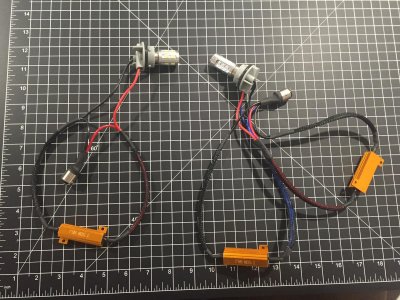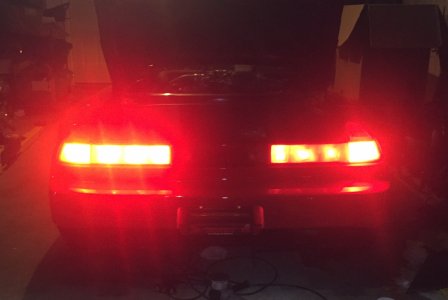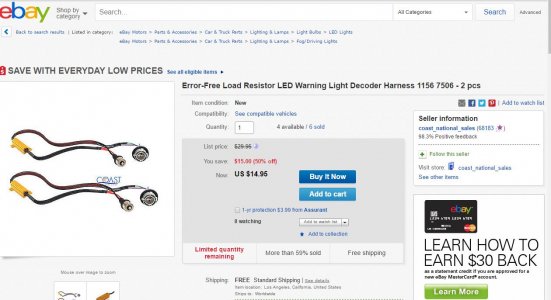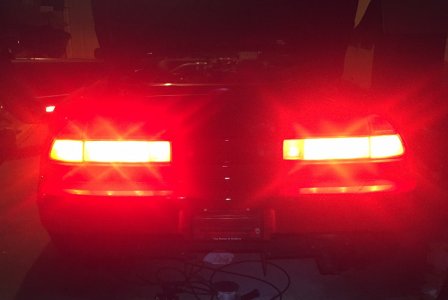As a recent owner, I was surprised to find that our 25 year old cars don't have an easy solution to retrofit LED lights in the tail lights, brake lights, turn signals, etc... There were 2 solutions I found which involved disabling the bulb-out notifications.
Hyperflashing/hyperblinking is a safety feature to let you know a bulb is out. One solution was to disable that safety feature by modifying the flasher relay: http://www.nsxprime.com/forum/showt...ure-Solution?p=1881347&viewfull=1#post1881347
The BRAKE LAMP light in the instrument cluster is another safety feature that some disable by grounding out a particular wire: http://www.nsxprime.com/forum/showthread.php/158884-Converted-to-LED-brake-light-bulbs-very-happy
Now there are ready-made sockets with load resistors which allow using any LED bulb. I found mine on eBay for a few bucks each.


On the left is the 1156 single filament bulb with resistor harness. The right is the 1157 dual filament which uses 2 resistors (1 for each circuit).

This is without the brake pedal depressed. Guess which side has the LEDs

Brake pedal depressed. Pic doesn't do justice to the LED brightness.
Best of all, NO HYPERFLASH, NO BRAKE LAMP error and 100% reversible.
Depending on the harness you buy, you may need to shave a couple of nubs off the ebay socket to get the bulb to seat in the taillight. Sorry I don't have a pic of this but once you compare the two it will be apparent what needs to be shaved. Also, the resistors should be mounted directly to metal to dissipate heat. I have ordered up some heat-conducting mounting tape which should do the trick.
Next up I will try the front turn signals. Should be similar process although mounting the resistors might be a challenge.
If this helps you, please post in this thread and let us know!
Hyperflashing/hyperblinking is a safety feature to let you know a bulb is out. One solution was to disable that safety feature by modifying the flasher relay: http://www.nsxprime.com/forum/showt...ure-Solution?p=1881347&viewfull=1#post1881347
The BRAKE LAMP light in the instrument cluster is another safety feature that some disable by grounding out a particular wire: http://www.nsxprime.com/forum/showthread.php/158884-Converted-to-LED-brake-light-bulbs-very-happy
Now there are ready-made sockets with load resistors which allow using any LED bulb. I found mine on eBay for a few bucks each.
On the left is the 1156 single filament bulb with resistor harness. The right is the 1157 dual filament which uses 2 resistors (1 for each circuit).
This is without the brake pedal depressed. Guess which side has the LEDs
Brake pedal depressed. Pic doesn't do justice to the LED brightness.
Best of all, NO HYPERFLASH, NO BRAKE LAMP error and 100% reversible.
Depending on the harness you buy, you may need to shave a couple of nubs off the ebay socket to get the bulb to seat in the taillight. Sorry I don't have a pic of this but once you compare the two it will be apparent what needs to be shaved. Also, the resistors should be mounted directly to metal to dissipate heat. I have ordered up some heat-conducting mounting tape which should do the trick.
Next up I will try the front turn signals. Should be similar process although mounting the resistors might be a challenge.
If this helps you, please post in this thread and let us know!
Attachments
Last edited:











